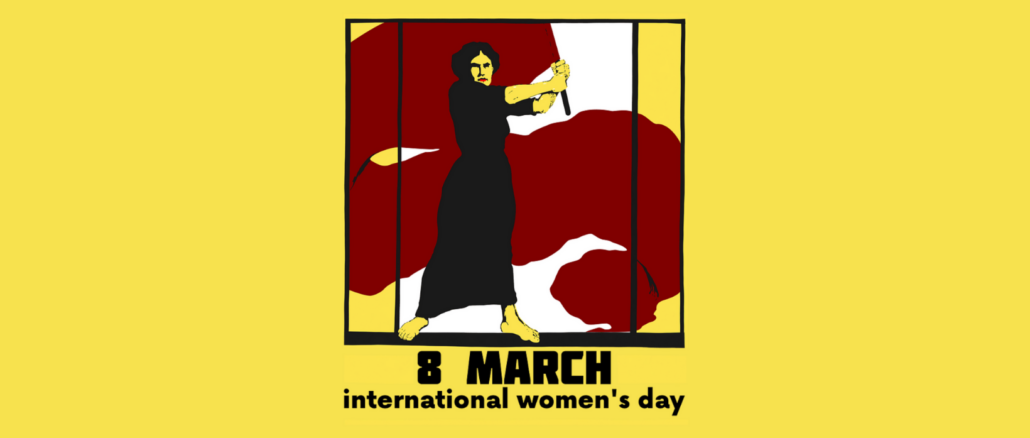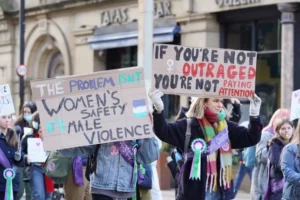
March 8th marks a significant occasion observed globally – International Women’s Day (IWD). For well over a century, this day has served as a beacon of recognition and advocacy, celebrating the remarkable achievements of women while galvanising efforts to accelerate gender equality across all facets of society. From grassroots gatherings to large-scale events, International Women’s Day symbolises solidarity, empowerment, and collective action.

Dating back to 1911, the inaugural International Women’s Day gathering marked a historic milestone in the global struggle for women’s rights and empowerment. The event, which took place on March 19th of that year, was organised by the German socialist and feminist Clara Zetkin, alongside her comrades in the Socialist International. Initially proposed at the International Conference of Working Women in Copenhagen the previous year, the idea was to establish an annual day to promote equal rights, suffrage, and improved working conditions for women.
On that momentous day in 1911, over a million people across Europe came together to participate in rallies, marches, and demonstrations, calling for an end to discrimination and inequality. From Austria to Denmark, Germany to Switzerland, women and men from all walks of life joined forces in a show of solidarity and determination. It was a powerful display of collective action, with participants demanding the right to vote, access to education and employment, and an end to gender-based violence and exploitation.
Since that pivotal moment, International Women’s Day has continued to gain momentum and significance, evolving into a global movement for gender equality and women’s empowerment. In 1913, Russian women observed their first International Women’s Day on February 23rd (according to the Julian calendar then in use), which later became March 8th in the Gregorian calendar. This date was later adopted by the international community as the official day for commemorating International Women’s Day.
Throughout the 20th century, International Women’s Day served as a focal point for women’s rights activists and organisations around the world. In the midst of two World Wars and the fight against colonialism and imperialism, women continued to mobilise and organise, using International Women’s Day as a platform to advocate for social, economic, and political change.
In 1975, the United Nations officially recognised March 8th as International Women’s Day, further solidifying its status as a global observance. Since then, International Women’s Day has grown in scale and scope, with celebrations taking place in countries across every continent. From grassroots initiatives to high-profile events, International Women’s Day has become a cornerstone of the global calendar, serving as a reminder of the progress made and the work that still remains to be done in the fight for gender equality.

Today, International Women’s Day continues to inspire and mobilise people around the world, galvanising efforts to address pressing issues such as gender-based violence, unequal access to education and healthcare, economic inequality, and underrepresentation in positions of power and leadership. As we reflect on the history of International Women’s Day, we honour the courage, resilience, and determination of those who have fought tirelessly for women’s rights, while reaffirming our commitment to building a more just, equitable, and inclusive world for all.
At its core, International Women’s Day is a multifaceted celebration, honouring the social, economic, cultural, and political contributions of women throughout history. It serves as a poignant reminder of the resilience, creativity, and leadership demonstrated by women in every corner of the globe, often in the face of adversity and systemic barriers.
Moreover, International Women’s Day is not merely a retrospective reflection but a call to action—a rallying cry for accelerated progress towards gender equality. While significant strides have been made over the past century, the journey towards achieving true parity remains unfinished. Women continue to face myriad challenges, including gender-based violence, unequal access to education and healthcare, economic disparity, and underrepresentation in positions of power and leadership.
As we commemorate International Women’s Day in the present day, it is imperative to acknowledge both the progress made and the work that lies ahead. The theme for this year’s International Women’s Day, “Count Her In: Invest in Women. Accelerate Progress.” underscores the importance of challenging stereotypes, combating discrimination, and fostering an inclusive society where every woman and girl can thrive.
Across the globe, individuals and organisations are coming together to mark International Women’s Day through a myriad of activities and initiatives. From panel discussions and workshops to art exhibitions and community events, the day serves as a catalyst for dialogue, reflection, and advocacy.

Beyond the festivities, International Women’s Day also serves as a catalyst for tangible change. It is a reminder that gender equality i
s not a women’s issue but a fundamental human rights imperative—one that requires the collective effort of individuals, communities, governments, and institutions to address.
As we look to the future, let us reaffirm our commitment to advancing the rights and opportunities of women and girls worldwide. Let us strive to create a world where every woman is empowered to fulfil her potential, where diversity is celebrated, and where gender equality is not just a distant aspiration but a lived reality for all.
In commemorating International Women’s Day, let us honour the trailblazers who paved the way, celebrate the achievements of women past and present, and recommit ourselves to the ongoing pursuit of a more just, equitable, and inclusive world for generations to come.
SheSociety is a site for the women of Australia to share our stories, our experiences, shared learnings and opportunities to connect.
